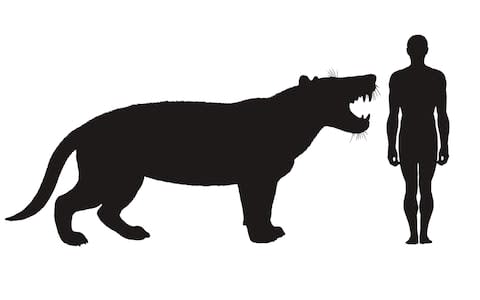Researchers find fossil in desk drawer of ancient giant 'lion' that roamed 20 million years ago in Kenya

A giant lion with enormous fangs that roamed the Kenyan savannah more than 20 million years ago was one of the largest ever meat-eating mammals, researchers said on Thursday
A team from Ohio University found the lower jaw, teeth and other bones of a new species, Simbakubwa kutokaafrika - Swahili for “big African lion” - in 2010 in a desk drawer in Nairobi museum.
They calculated the predator would have weighed up to 1,500 kilogrammes and could have fed upon the elephant-like creatures that lived there at the time.
“Based on its massive teeth, Simbakubwa was a specialised hyper-carnivore that was significantly larger than the modern lion and possibly larger than a polar bear,” said Matthew Borths, from Duke University, who co-led the research with Ohio University.
An artist's impression of the creature shows a giant big-cat-like hunter with stripey fur and gigantic teeth.

Simbakubwa was a member of a group called hyaenodonts that appeared 62 million years ago, 4 million years after the extinction of the dinosaurs paved the way for mammalian dominance, and went extinct 9 million years ago.
Hyaenodonts preceded carnivore groups like cats, bears, hyenas and wolves, and were closely related to none of them.
“At first glance, it would have looked like a gigantic hyena or long-tailed wolf with a head that was a little too big for its body. I imagine something like the 'wargs' from 'Lord of the Rings,'” said Mr Borths, referring to fictional monstrous wolves.
Simbakubwa's name means “big lion” in Swahili though it was not a cat. It was the largest predator in its ecosystem, a fragmented forest inhabited by early apes, hippo relatives and elephant relatives.
“It was not an animal built for long efficient runs across open ground. Instead, its foot was flexed. Carnivores with this posture tend to be ambush hunters like tigers rather than pursuit hunters like wolves,” Mr Borths said.

 Yahoo News
Yahoo News 